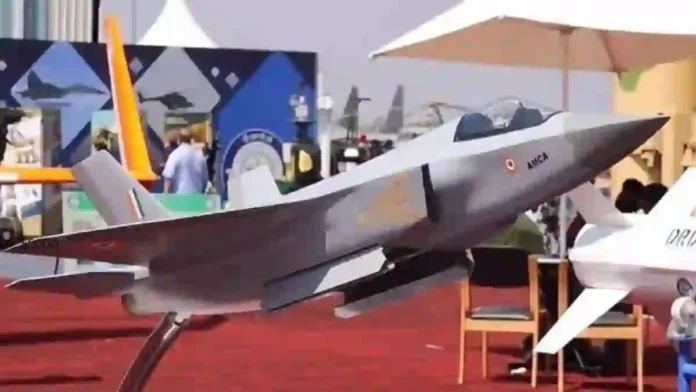“The gateway to advanced technology exchange,” said Randy Howard, Lockheed Martin’s Global Pursuits Vice President. This collaboration is set to enrich interactions with the Indian research, industrial, and academic sectors
The partnership is about distributing expertise and insights to elevate India’s military aerospace industry to unmatched levels. It has been reported by Indian media that Lockheed Martin could potentially collaborate with Indian engineers on cockpit design, understanding of 5th generation cockpit technology, Man-Machine Interface [MMI] systems, and even the Auto GCAS, the ground collision avoidance system, reported BulgarianMilitary.com.
A shared journey with Lockheed Martin could indeed be invaluable for the Indian industry, particularly if the collaboration focuses on the realm of fifth-generation fighters. Knowledge transfer and technology sharing with India’s AMCA program could expedite its progress, potentially leading to the creation of an advanced fighter jet that is unparalleled in technology.
Understanding AMCA
The Indian AMCA [Advanced Medium Combat Aircraft] program is a national initiative aimed at developing a fifth-generation fighter aircraft. The program is led by the Aeronautical Development Agency [ADA] in collaboration with the Indian Air Force [IAF]. The AMCA is designed to meet the IAF’s requirements for a modern, multi-role combat aircraft with stealth capabilities.
The AMCA program envisages the development of a twin-engine, all-weather, multi-role fighter aircraft with stealth features. The aircraft is expected to have advanced avionics, supercruise capability [the ability to sustain supersonic flight without using afterburners], and integrated weapon systems. The program also plans to incorporate advanced materials and technologies to reduce the aircraft’s radar cross-section and enhance its survivability.
The aircraft being developed under the AMCA program are the AMCA MK-1 and MK-2. The MK-1 is expected to be a 25-ton aircraft with a range of 2,800 kilometers, while the MK-2 is expected to be a larger and more advanced version with a range of 3,200 kilometers. Both versions will feature a high degree of automation and network-centric warfare capabilities.
The MK-1 Is Expected In 2030
As for the progress of the program, the preliminary design stage of the AMCA has been completed, and the detailed design phase is currently underway. The first full-scale model was unveiled at Aero India 2019, indicating significant progress in the program.
Concrete results are expected in the coming years. The first flight of the AMCA is scheduled for 2025, with the production of the Mk1 version expected to commence by 2030. The more advanced Mk2 is expected to enter production by 2035, marking a significant milestone in India’s defence aviation industry.
India Booted Russia Out of AMCA Project
Earlier this year, India’s Cabinet Committee on Security accepted a proposal for the production of fifth-generation fighter jets as part of the Advanced Medium Combat Aircraft [AMCA] project. As reported by BulgarianMilitary.com, the estimated cost for this technologically advanced venture is approximately $1.8 billion.
This critical strategic move has tasked Hindustan Aeronautics, the country’s leading aircraft manufacturer, with the creation of prototype aircraft. This crucial decision represents India’s shift towards the development of its own AMCA fifth-generation fighter jet. Also it signaling a change in military weaponry strategy as it starts to distance itself from Moscow’s influence. This is primarily driven by Russia’s repeated attempts to market its own fifth-generation jets to India.
Let’s a flashback to 2010 when Sukhoi and Hindustan Aeronautics initiated a joint venture for the Su-57, previously known as the PAK FA. Russia offered a 25% stake in the venture, valuing it between $8-10 billion. However, this collaboration abruptly ended in 2018, with India withdrawing, citing the aircraft’s failure to meet fifth-generation standards, specifically in radar capabilities, stealth features, and onboard equipment. More recently in 2021, Russia tried yet again with the unveiling of its latest creation, the Su-75 Checkmate. However, India showed no interest.
The F-21 is a multi-role fighter aircraft developed by Lockheed Martin, an American aerospace company. It’s a variant of the F-16, specifically designed for the Indian Air Force, but it’s not directly related to the Russian Yanes-M class submarines. The F-21 fighter jet measures approximately 49.3 feet in length, with a wingspan of 32.8 feet and a height of 16.7 feet. It has a maximum takeoff weight of around 48,000 pounds. The aircraft is powered by a single General Electric F110-GE-132 turbofan engine, which can produce up to 32,500 pounds of thrust.
In terms of technical characteristics, the F-21 can reach a maximum speed of Mach 2.0, or twice the speed of sound. It has a combat radius of approximately 340 miles and a ferry range of 2,400 miles. The aircraft is also equipped with an internal M61A1 20mm cannon and can carry an impressive payload of up to 17,000 pounds.
The F-21’s avionics are state-of-the-art. The aircraft features an advanced APG-83 Active Electronically Scanned Array [AESA] radar, which provides superior target detection and tracking. It also includes a high-resolution, centre pedestal display and a modernized cockpit that enhances the pilot’s situational awareness. Regarding armament, the F-21 is capable of carrying an AIM-120 Advanced Medium-Range Air-to-Air Missiles [AMRAAM]. It is capable of carrying also AGM-88 and GBU-10 Paveway II laser-guided bombs.
(With Reporting by BulgarianMilitary.com)




